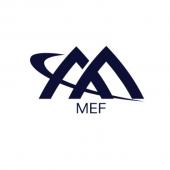NaaS 2024: A Look at the Future of Network Services
As NaaS continues to evolve with AI, SDN, and industry-specific solutions, it is poised to shape the future of network services.

In today's fast-paced business landscape, enterprises are under constant pressure to adapt to changing market dynamics, customer demands, and technology advancements. Digital transformation has become a strategic imperative for organizations looking to remain competitive and drive growth. At the core of this transformation is the need for agile, scalable, and cost-effective networking solutions that can keep pace with the ever-evolving digital ecosystem. Reliable and flexible network infrastructure is no longer a luxury; it's a necessity. Businesses of all sizes depend on seamless connectivity to support core operations, collaborate with teams and partners, and deliver exceptional customer experiences. This is where Network-as-a-Service (NaaS) emerges as a game-changer, reshaping how organizations consume and manage their network resources.
NaaS, a cloud-based delivery model, provides enterprises with on-demand access to network services, including connectivity, application assurance, security, and cloud access, all with customer-automated management capabilities. Instead of owning and maintaining complex physical network infrastructure, enterprises can leverage the flexibility and scalability of NaaS solutions, which enables them to rapidly provision and adapt their network resources to meet changing business requirements.
Key NaaS Adoption Drivers
Driving the rise of NaaS are several key factors - increasing adoption of cloud computing, the proliferation of mobile and Internet of Things (IoT) devices, remote work models, and the growing demand for agility and cost optimization. All of which necessitates a network infrastructure that can seamlessly adapt to fluctuating service and bandwidth demands. Traditional network infrastructure often struggles to keep up with the dynamic nature of modern business operations, leading to inefficiencies, complexity, and high operational costs. Another critical factor is the exploding threat landscape and the growing complexity of these network security threats. Cyberattacks are happening more often and becoming more sophisticated, and businesses require robust security solutions to protect their data and systems.
NaaS solutions offer a flexible, pay-as-you-go, or monthly subscription model, eliminating the need for significant upfront capital investments and ongoing maintenance costs. This allows enterprises to rapidly scale their network resources up or down based on evolving needs, ensuring optimal performance without unnecessary expenditures. NaaS frees up valuable IT resources from managing network infrastructure, allowing them to focus on core business initiatives and drive innovation. Additionally, NaaS providers offer advanced security features and expertise, allowing businesses to leverage industry-leading protection without the need for in-house security specialists.
The Future of NaaS: AI, SDN, and Industry-Specific Solutions
The NaaS landscape is constantly evolving, with innovative solutions emerging to meet the ever-changing needs of businesses. One exciting trend is the integration of Artificial Intelligence (AI) for network automation and self-healing capabilities. AI-powered NaaS can automatically detect and address network issues, mitigate threats, minimize downtime, and ensure optimal performance.
Another development is the rise of Software-Defined Networking (SDN) within the NaaS model. SDN offers greater network flexibility and programmability, allowing businesses to customize their network configurations with ease. Given this, we can expect to see the development of specialized NaaS solutions tailored to the specific needs of different industries, such as healthcare, warehousing, smart factories, and manufacturing, for example.
A Catalyst for Digital Transformation
One of the key benefits of NaaS is its ability to support enterprise digital transformation initiatives. By providing a robust and adaptable networking foundation, NaaS enables organizations to integrate and leverage emerging technologies seamlessly. This seamless integration empowers enterprises to unlock new revenue streams, enhance customer experiences, and drive innovation across their operations. NaaS solutions, with their flexibility and scalability, allow businesses to adapt their network infrastructure to support the integration of these emerging technologies, maximizing benefits and staying ahead in the digital era.
As enterprises embrace digital transformation, they are also seeking ways to optimize their operational costs and reduce capital expenditures. NaaS solutions align perfectly with this objective by offering a consumption-based pricing model, where enterprises pay only for the network resources they utilize. This approach eliminates the need for significant upfront investments in network infrastructure and allows organizations to redirect their capital towards other strategic initiatives.
Building a Future-Proof NaaS Ecosystem: Automation and Standardization
Inherent to the success of any complex system is a foundation built on automation and standardization. NaaS thrives on these principles. Automation empowers NaaS providers to deliver services efficiently and consistently while reducing the risk of human error. Standards-based solutions ensure interoperability between different NaaS components and service providers, allowing businesses to integrate NaaS solutions seamlessly from various vendors without compatibility issues. Recognizing this critical need, MEF has developed the NaaS Industry Blueprint, which frames the market opportunity and defines the core NaaS components and capabilities and the crucial role of automation in the NaaS ecosystem. With these tools, businesses and providers can ensure a smooth and future-proof NaaS experience. As NaaS continues to evolve with AI, SDN, and industry-specific solutions, it is poised to shape the future of network services, empowering businesses to thrive in an increasingly digital world.
MEF's Global NaaS Event (GNE), 28-30 October, will offer a wealth of insights into the next generation of NaaS.
(Editor’s note: This article is part of our regular series of articles from the industry experts at MEF.)
Pascal Menezes, CTO at MEF, is a seasoned expert with a laser focus on cutting-edge technologies. His areas of expertise encompass SD-WAN, SASE, cloud-scale architectures, real-time media networks, SDN, NFV, and LSO. With a decade at Microsoft Skype for Business Global Carrier Group and a track record of success in five startups, Pascal has earned global thought leadership awards, presented at renowned events, and contributed to industry standards in the IETF, MEF, and Broadband Forum (MPLS), holds 30+ patents. Pascal hosts MEF's Executives at the Edge podcast.
See his collection of Network Computing articles here.
About the Authors
You May Also Like






